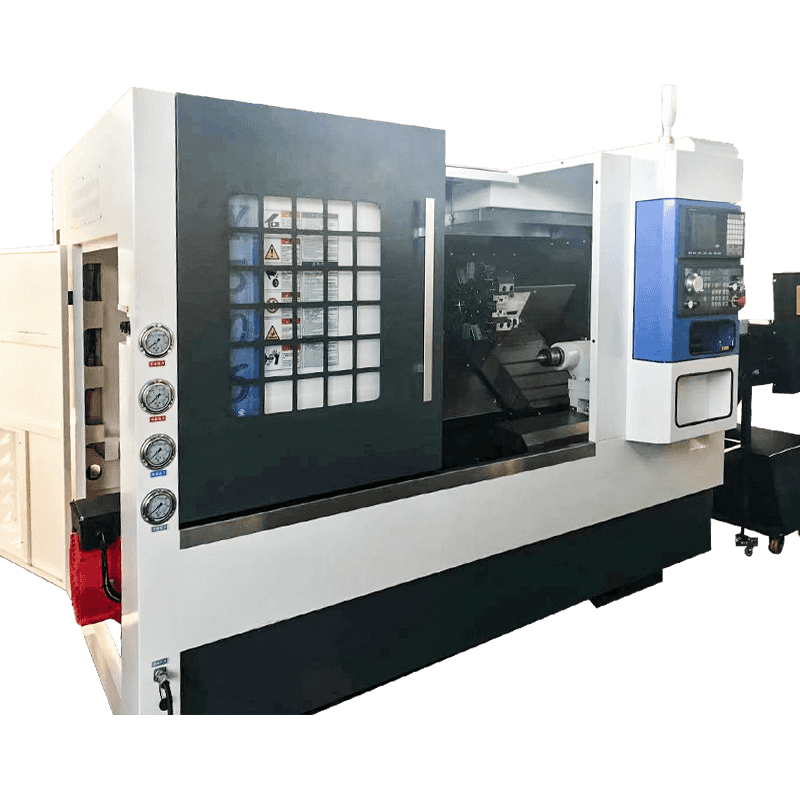Technical Characteristics: The machine tool is a single-column vertical guideway structure. The colu...
See Details
The advent of Computer Numerical Control (CNC) has transformed milling from a manual, skill-intensive craft into a highly precise and repeatable manufacturing process. At its core, CNC milling is a subtractive manufacturing technique where a computer-controlled machine tool uses a rotating cylindrical cutter to remove material from a workpiece. However, CNC milling machine does not describe a single, monolithic tool. Instead, it encompasses a diverse family of machines, each engineered to address specific geometric requirements, production volumes, and material challenges. The primary classification of these machines is generally based on their mechanical configuration, which directly influences their capabilities, the complexity of parts they can produce, and their role within a manufacturing workflow. The common types include vertical machining centers (VMCs), horizontal machining centers (HMCs), and 5-axis milling machines.

A Vertical Machining Center (VMC) is characterized by a spindle oriented vertically, with the cutting tool approaching the workpiece from above. This is perhaps the ubiquitous configuration, commonly found in job shops, prototyping facilities, and educational institutions. Its design is relatively straightforward, often resembling a robust drill press with the ability to move the table in the X and Y axes while the spindle moves in the Z-axis. This arrangement provides good visibility of the machining process for the operator and is generally accessible for setup and workpiece loading. VMCs are well-suited for machining flat surfaces, pockets, slots, and simple contours, making them a versatile choice for a wide array of components, from mold bases to bracket plates.
In contrast, a Horizontal Machining Center (HMC) features a horizontally oriented spindle. The workpiece is typically mounted on a pallet that can be indexed or rotated, and the tool approaches from the side. This configuration offers a distinct advantage in chip management. Gravity naturally pulls chips away from the workpiece and the cutting tool, preventing recutting and potential damage to the finished surface, which is particularly beneficial when machining deep cavities or in high-volume production. Furthermore, HMCs often incorporate tombstone fixtures—vertical blocks mounted on the pallet—allowing multiple parts to be mounted and machined in a single setup. This significantly reduces cycle times for batch production of parts like engine blocks or transmission cases, where multiple sides require machining.
Beyond the vertical and horizontal paradigms, 5-axis milling machines represent a significant step forward in manufacturing flexibility. These machines possess three linear axes (X, Y, Z) and two rotational axes (A, B or C), which can operate simultaneously. This multi-axis capability allows the cutting tool to approach the workpiece from nearly any direction in a single setup. The practical benefit is twofold. It enables the creation of highly complex, organic geometries that would be impossible to produce on a 3-axis machine without multiple, time-consuming re-fixturings. Second, it improves accuracy for complex parts by eliminating the accumulation of errors that can occur across multiple setups. Industries such as aerospace, for manufacturing turbine blades and impellers, and medical, for producing orthopedic implants, rely heavily on 5-axis technology.
To understand the practical application and inherent characteristics of a specific machine type, it is useful to examine the Vertical Machining Center in greater detail. Its operation, strengths, and limitations are defined by its foundational design principle: a vertical spindle and a table that moves primarily in the horizontal plane.
The workflow on a VMC begins with a digital model created in Computer-Aided Design (CAD) software. This model is then translated into a set of machine instructions, known as G-code, through Computer-Aided Manufacturing (CAM) software. The G-code dictates every movement of the machine, from spindle speed and feed rate to the precise path of the cutting tool. Once the program is loaded, an operator secures the raw material—which could be a block of aluminum, steel, plastic, or a pre-formed casting—to the machine's table using vises, clamps, or a modular fixture system. After installing the required cutting tools into the machine's automatic tool changer (ATC), the cycle is initiated. The ATC allows the machine to perform complex operations involving drills, end mills, and taps without manual intervention, significantly enhancing its autonomy.
The utility of the VMC is demonstrated in countless real-world applications. In the automotive industry, VMCs are routinely used to machine components like cylinder heads and gearbox housings. A specific example is the production of an aluminum alloy engine mounting bracket. The VMC can face-mill the rough casting to a precise thickness, drill and tap the bolt holes, and mill out the central pocket to reduce weight—all in a single setup. This ensures critical dimensional relationships, such as the parallelism between mounting surfaces, are maintained with a high degree of consistency. Similarly, in the consumer electronics sector, VMCs are employed to machine the metal frames and chassis for laptops and mobile devices, where thin walls and precise slot features are common.
However, the vertical spindle configuration also presents certain constraints. One notable limitation is in deep-cavity machining. As an end mill plunges deeper into a workpiece, its long, slender shank can begin to deflect, inaccuracies and a poor surface finish. The accumulation of chips within a deep pocket can also pose a problem, as they are not easily evacuated and can interfere with the cutting process. Furthermore, while a VMC can machine multiple sides of a part, this requires the operator to stop the machine, unclamp the workpiece, reposition it, and then re-establish its coordinate system. This process introduces opportunities for human error and adds non-cutting time to the overall production process, making VMCs less efficient than HMCs or 5-axis machines for parts requiring complex, multi-sided machining.
Our team of digital and business experts will guide you to the right direction.
Let's Talk